|
|
|
Fresh from the Field is a weekly album showcasing transformative impacts made by grantees funded by the National Institute of Food and Agriculture.
April 20, 2017
|
|
Success Stories
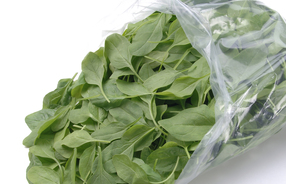 Computing the end of e. coli contamination
Vegetables
are key to a healthy and nutritious diet. However, eating raw leafy greens increases
the risk of foodborne illness caused by pathogenic strains of Escherichia coli.
Researchers at the University
of Maryland (UMD) developed the first dynamic systems model to understand
the pathway of E. coli in leafy green production. This model simulates
the effects of soil, irrigation, cattle, wild pigs, and rainfall on a
hypothetical farm.
“Results of our study can help prevent crop
contamination at the pre-harvest stage, reducing the number of leafy green
related illnesses in the future,” said Abani K. Pradhan, Ph.D. of UMD’s College
of Agriculture and Natural Resources.
NIFA funded
the research through the Specialty
Research Crop Initiative.
Read more on the
UMD E.coli study here.
|
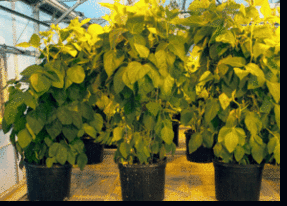 Soybean research may reduce
the need for nitrogen fertilizer
Nitrogen
is a nutrient that helps plant growth, yet overuse of nitrogen fertilizers can
harm the environment. Mechthild Tegeder, a biologist with Washington State
University (WSU), has developed a way to increase soybean quality and yield
by using the plant’s unique ability to pull nitrogen from the air.
Unlike crops that rely on natural
and artificial nitrogen in soil, soybeans and other legumes contain rhizobia
bacterioids in their root nodules that convert nitrogen gas from the
atmosphere.
Tegeder’s
research team created a model to increase the flow of nitrogen from specialized
bacteria in soybean root nodules to the seed-producing organs. Tegeder and
biological sciences graduate Amanda Carter discovered that the plants grew more
when exposed to increased rates of nitrogen.
“The
biggest implication of our research is that by ramping up the natural nitrogen
allocation process we can increase the amount of food we produce without contributing
to further agricultural pollution,” said Tegeder. “Eventually we would like to
transfer what we have learned to other legumes and plants that humans grow for
food.”
Read more about the Agriculture and Food Research Initiative (AFRI) WSU research here.
|
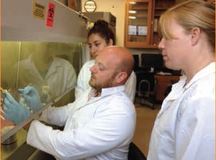 Foot-and-mouth disease
research reveals new insights
Foot-and-mouth disease (FMD) is a highly infectious disease that affects cloven-hooved
domesticated animals such as pigs and cows. Symptoms include lesions in the
mouth and on the hooves, weight loss, and ill health. The disease can have
devastating financial effects on farmers.
University
of Connecticut (UConn) scientist Steven Szczepanek, in collaboration with
researchers from Plum Island Animal Disease Center, worked on a universal
vaccine that may cover various types of the virus. Funding was provided by NIFA's Agriculture
and Food Research Initiative (AFRI).
Read more about the UConn research here.
|
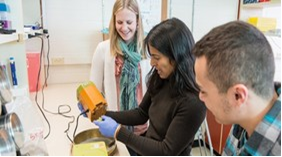 Eating beans and rice may reduce
cancer
Clinical trials at Colorado State University (CSU) confirm
that people who ate food enhanced with navy beans and rice bran may gain some
protection against colorectal cancer. Past studies on animals showed similar
benefits. The research was funded through NIFA’s Agriculture and Food Research Initiative (AFRI).
“The evidence is there in animals and we can now study this in
people. The question is, what are we doing to achieve adequate levels of intake
of these foods,” said Elizabeth Ryan of Colorado State University.
The next research step will examine the effects of cooked navy
bean powder and rice bran on colon tissue of people who had colorectal cancer
and are at high risk for recurrence.
Read the CSU article here.
|
News Coverage
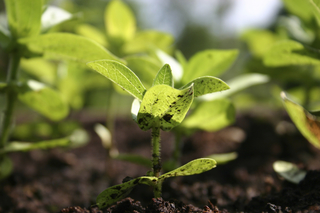 Technology
improves soil health
Agricultural engineer
Kendall Kirk at Clemson University created free software to help farmers track field soil samples. When farmers
collect samples in the field, they can use the software’s GPS function to
select representative samples from the field management zone, an area
containing common soil characteristics.
“What
you’ll have is a soil sample ID for each sampling zone. Send that to Clemson
and you’ll get it back with a nutrient recommendation,” said Kirk. “These soil
samples are guiding your nutrient application rates, your potassium and
phosphate applications. At the end of the day, we are trying to boost
profitability.”
Accurate
soil data will help farmers maximize yields or lower operating costs by
optimizing nutrient inputs.
Read more about
the Clemson research here.
|
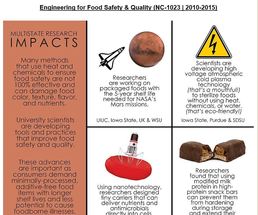 Improving food
quality
The NIFA-supported Multistate Research Fund supports collaborative research among land-grant colleges and Agricultural Experiment Stations. One project, Engineering for
Food Safety and Quality, has investigated food
materials, processing technologies, and developed mathematical models to optimize food safety and
quality.
Learn more about the research through this infographic.
|
Video
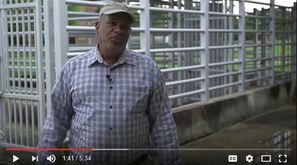 Making a
difference in Louisiana
The
Southern University Agricultural Research and Extension Center (SUAREC) works
to improve the impact of land-grant programs in Louisiana. The center conducts
basic and applied research, and offers a range of community programs, such as
hands-on training for farmers, youth development programs, urban forestry and
natural resources education, and health and nutrition education.
Watch the Southern University video here
|
Tweet of the Week
#NIFAIMPACTS
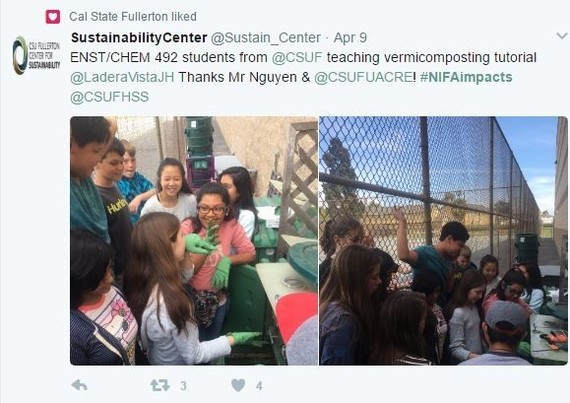
|
|

For more NIFA Impacts, visit nifa.usda.gov/impacts or the Land-Grant University Impacts website. Send us your NIFA-funded impacts at impactstories@nifa.usda.gov or share them on Twitter @USDA_NIFA, #NIFAimpacts.
NIFA invests in and advances agricultural research, education, and extension and promotes transformative discoveries that solve societal challenges.
Fresh from the Field is a weekly compendium of news and information that may be of interest to land-grant and non-land-grant universities, NIFA stakeholders, and other subscribers.
Editor: Falita Liles; Co Editor: Carlos Harris
|
|